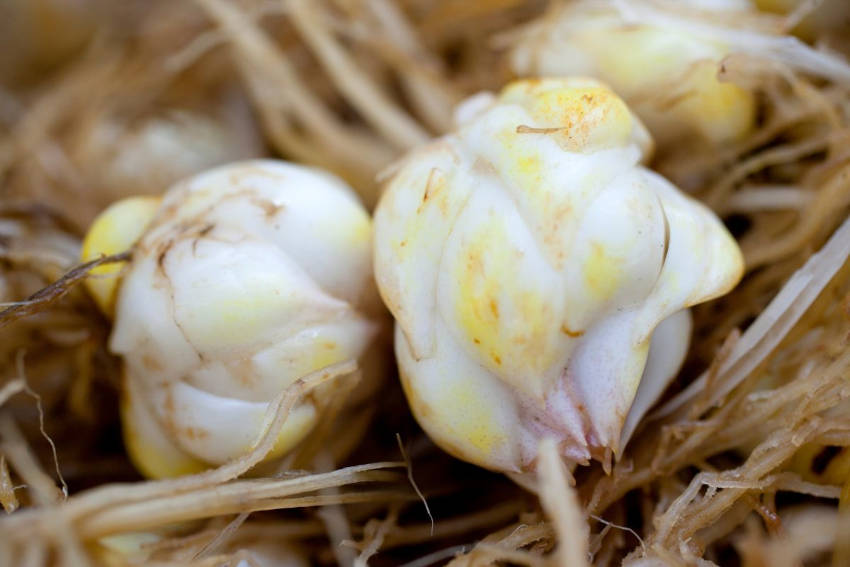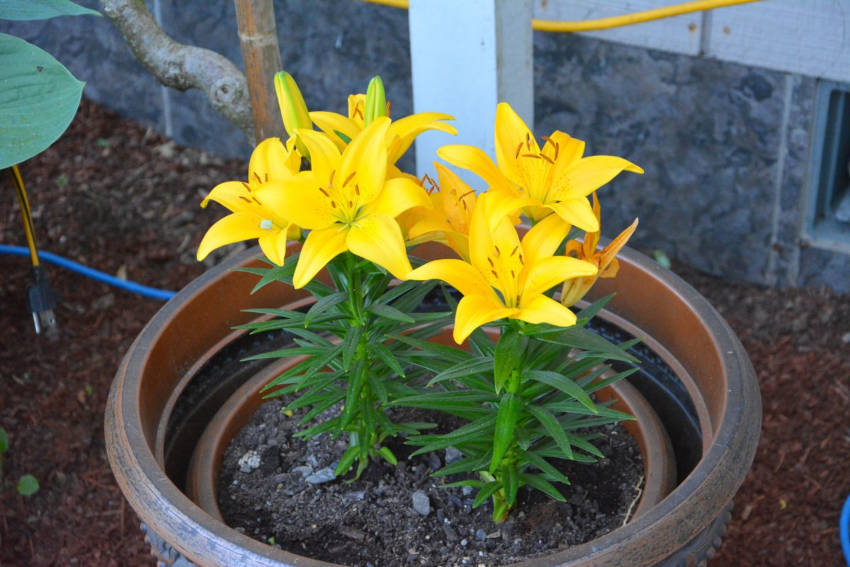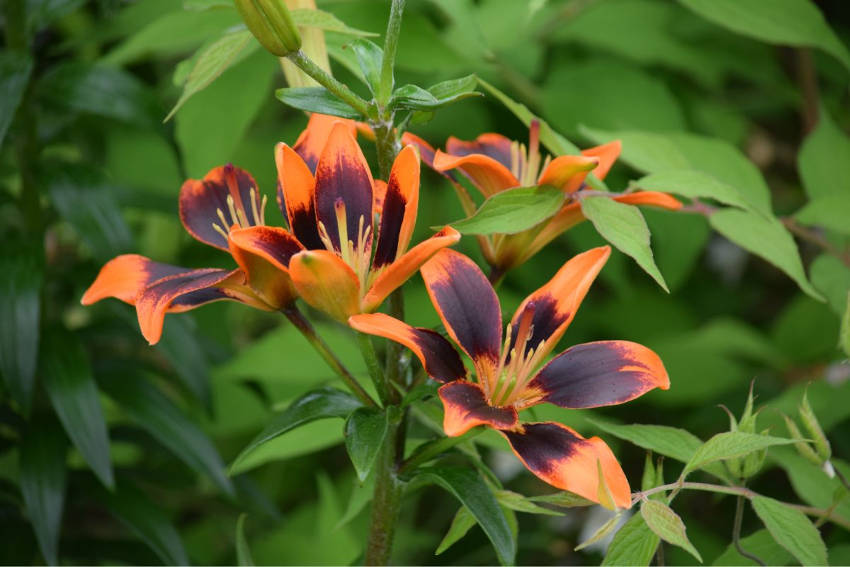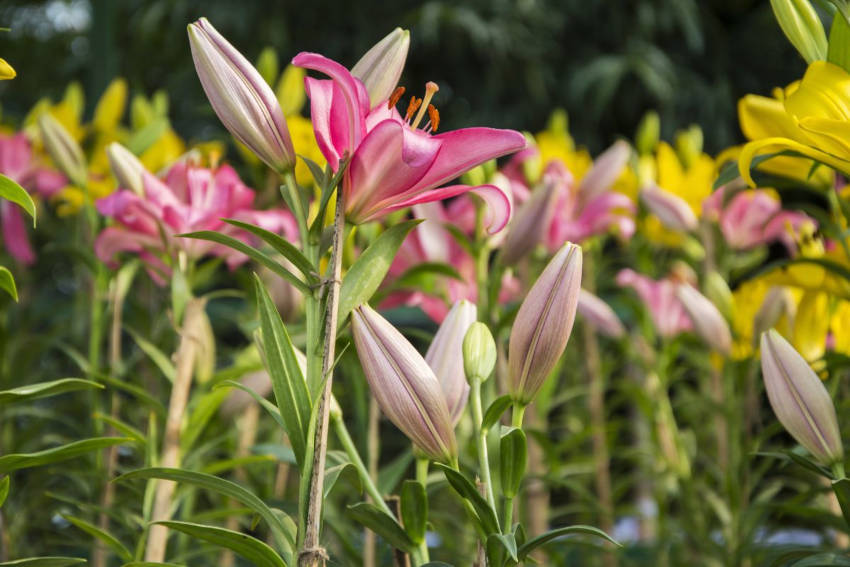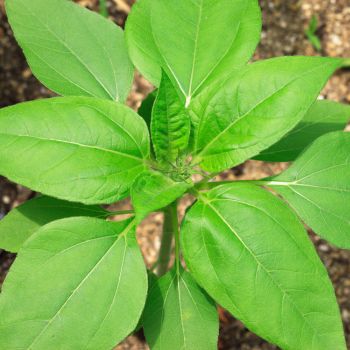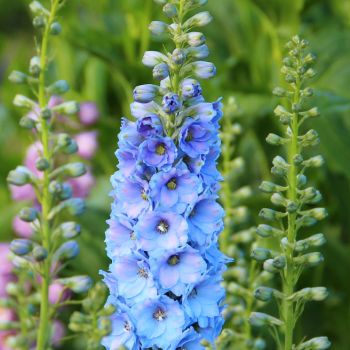Few flowers bring as much beauty to a summer garden as lilies. While many garden plants are known by the common name 'lily', true lillies belong to the genus Lilium. Growing from a scaly bulb, liliums are upright perennials 70cm to 180cm tall with narrow leaves and beautifully scented trumpet-like blooms. They star in the heat of summer and also make long lasting cut flowers. Grow them in clumps between other plants or group them in large containers where their scent and colour can be enjoyed.
What's more, varieties are available that can thrive in all Australian climates, from tropical to cool. So long as their basic soil conditions are respected, lilies are easy to care for and flowers will return year after year with a blaze of summer colour. Here's what you need to know to add this elegantly impressive flower to your perennial garden.
Position & Soil Preparation
Lilies can be grown in full sun or part shade. In cool or warm temperate regions, a position with morning sun but protection from strong afternoon sun is ideal. In hotter climates, plant in dappled shade or a spot with just a few hours of morning sun. If afternoon sun is unavoidable, take extra care with watering to prevent the soil drying out, which can quickly cause wilting.
Lilies prefer to have cool roots, so planting them beneath shrubs or between groundcover plants will help to give them the conditions they prefer. Again, if this isn’t possible in your garden, apply a thick layer of organic mulch to help keep the roots cool.
Lilies are reasonably drought tolerant once established, but regular watering during the growing season will help them establish. That said, very moist conditions can lead to the bulbs rotting. If your garden is at all prone to waterlogging, consider growing them in raised beds, in mounded-up borders or containers, or in parts of the landscape with a natural slope.
And lastly, lilies do best in soil with a slightly acidic pH of between 5.5 and 6.5, making them ideal partners for azaleas and camellias.
Planting Your Lily Bulbs
Lily bulbs should be planted from early winter through to early spring, giving them time to establish and develop roots before the growing season starts in earnest. However, as they're supplied as fresh, green bulbs rather than dormant ones, they need to be put in the soil as soon as possible after arrival. The fresh bulbs shouldn’t be allowed to dry out, so don't delay in planting even if the timing isn't quite ideal.
In flowerbeds, lily bulbs should be planted 20-40cm apart, and at a depth of 10-20cm or roughly twice the depth of the bulb's size. Alternatively, plant lilies in clumps by digging one large hole, spreading the bulbs out at the recommended spacing within it, and then backfilling with soil.
Ensure lilies in the open soil have a good start to life by mulching with compost or well-rotted cow manure, or by sprinkling over a slow-release fertiliser or blood and bone.
Lilies are happy growing in large containers, so long as they're spaced about 10cm apart and around 15cm deep. When growing several plants in one large pot, position the bulbs so that they're all pointing slightly inward and toward each other, so stems can support each other as they grow higher. Soil quality is especially important in pots, so choose potting mix enriched with a slow-release fertiliser, or add extra feed yourself to a standard potting mix.
After planting, add a dry mulch over the top to help keep the soil cool, and the bulbs should send out shoots in around one to three weeks.
Ongoing Care and Cultivation
Once the shoots emerge water deeply once or twice a week, also adding a liquid feed when the first buds start to form. Continue watering at the same rate until flowering is over, then remove the fading flower heads and apply another feed to help shore up the bulbs for the next growing season.
When removing the flowers, leave as much leafy stem behind as possible, and only cut the plant back completely once the stems have died off. This helps the bulbs to fully replenish their nutritional supplies for the next season.
Over time, lily bulbs will multiply to form natural clumps. They’re fine left in the ground year to year, but after three or four years they can become overcrowded and flowering will start to suffer. To avoid this, once large clumps have established lift the bulbs in late autumn and separate the new bulblets which are growing around the main bulb. Move the individual bulblets to a new position and replant the main bulbs in their original spot.
Common Pests & Diseases
Slugs and snails will target fresh lily shoots, so take your usual precautionary measures in spring. Aphid infestations can also be an issue, treatable with a sprayed mix of water and horticultural soap. And lastly, fungal problems can also crop up if lilies are overcrowded, so in humid climates pay special attention to spacing when you plant, and divide clumps every few years to keep the risk in check.
With a huge array of plant heights, flower types and colours to choose from, it's well worth adding lilies to the 'must grow' list for your garden.
